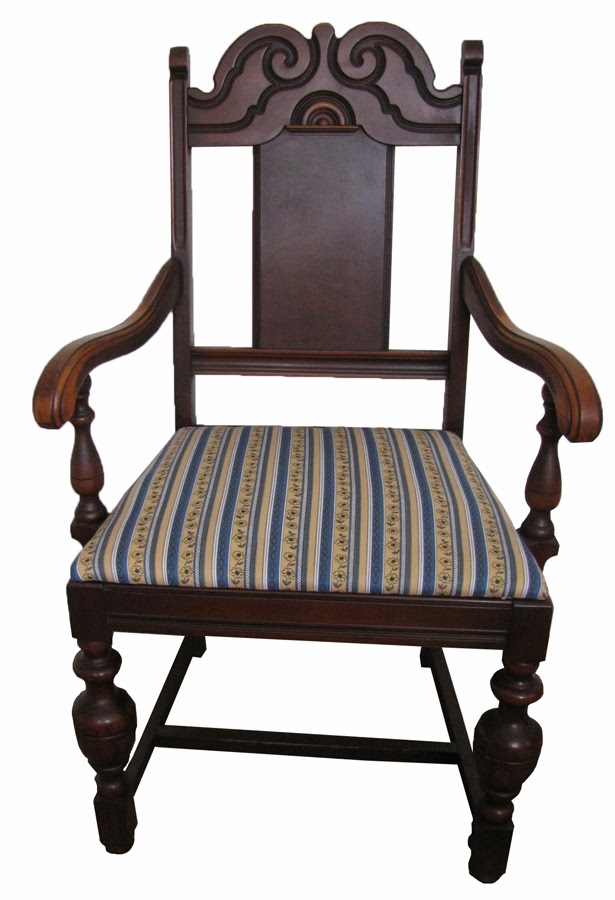 |
| Partially stripped spindle |
When stripping, it's important to protect your skin, since a good quality stripper not only removes the paint or stain from furniture, it can irritate your skin and burn when it makes contact. I recommend you use gloves especially crafted for working with chemicals. If you use the thinner, flexible Nitrile gloves commonly used for painting or staining, the stripper will disolve the rubber and expose your hand to the harsh chemical, causing it to burn. (If it doesn't burn your skin, it's not strong enough to remove the old finish!) To avoid this, use good quality gloves, and if you accidentally get stripping solution on your skin, wash and rinse it immediately!
If you plan on stripping a large, flat surface, have plenty of stripper on hand, because you're going to need it. I prefer to pour the stripper into a smaller container, then apply it with an inexpensive paint brush. Follow the manufacturer's instructions on how long to leave the stripper on. Depending on how many layers you're removing, it could be from 15 to 30 minutes. The more layers you have to remove, the longer it takes and the more times you'll have to apply new stripper. In warm or hot weather, the chemical dries very fast, so don't try to cover an entire table. Choose a 12" x 12" section and finish that before moving on. Use the correct stripper for your project, since they are not created equally. Buy the best one you can afford, as this will save you time and give you better results. There are strippers specifically created for paint or stain, or both. I prefer the one that does it all.
Once you have applied the stripper, you will see the paint or varnish bubble and crinkle on the surface. Take a putty knife and gently remove the stripper, going in one direction. You can use a plastic putty knife if you use a good quality stripper. A metal putty knife works well too, but be careful not to scratch the surface as you remove the old finishes. The layers of paint or stain will roll back away from the furniture as you swipe the putty knife across the surface, so you'll also have to use something to wipe the excess stripper/paint onto. I prefer a stiff piece of cardboard, or a thin piece of wood. Scrap off the debris, then swipe it into an empty coffee can. (You cannot reuse this, so dispose of it properly when your project is complete).
After you've removed as much paint/varnish as possible with the stripper, you can then use steel wool, #0, on flat surfaces, or a brass wire brush on curved surfaces, (sold at most home centers or hardware stores) to scrape off the residue left behind. Once you're satisfied that the residue is removed, you're ready to sand. The photo (above left) shows the arm of the chair after the old stain and varnish were removed and the spindle with the original finish. The old finish was so dark, you couldn't see any wood grain. Once the old finish was removed, the wood's natural beauty was revealed.
While working on this chair I also used paint thinner to "loosen" up and moisten the wood prior to applying the stripper, thus I discovered a solution to a dilemma that I'd been having since I first began furniture restoration; easily removing old finish from spindles! By applying the thinner shortly after applying the stripper, these two strong chemicals worked as a team to break through years and years of finish. As you can see in the photo below, together, they "melted" the old varnish right off the chair's leg so that it could easily be wiped away with a rag. Once this task was accomplished, I gently used the brass brush and steel wool to remove the old residue.
Then it was ready to sand and stain. I chose a red mahogany stain and semi-gloss polyurethane, and reupholstered the seat cushion with a traditional floral print. The hard work paid off since the chair is great!
| Removing old finish |
 |
| Finished Chair |


























